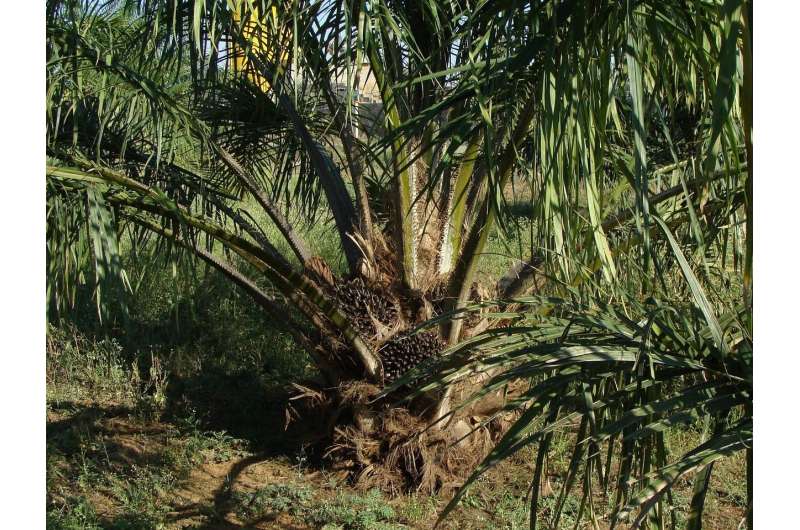Minimising the impacts of palm oil plantations

With palm oil production exploding around the world, a new study of a leading producer has found ways to make the process easier on the environment.
Ph.D. candidate Lain Pardo, from James Cook University in Australia, studied the industry in Colombia—a country described as being on the 'tip of the spear' in terms of burgeoning palm oil production.
The researchers used a new camera trapping technique across 2,000 square kilometres of the country's most important palm oil production region and found that while palm oil plantations are not suitable for most mammals to live in, the situation could be improved.
"We found that the number and diversity of species differed significantly between oil palm plantations and their neighboring forests, with the number of species inside oil palm plantations 47% lower, on average, than in the forest," said Mr Pardo.
He said that within the plantations, the number of different species declined as the number of cattle in the plantation rose, but species numbers were helped by the presence of dense undergrowth vegetation and proximity to forest.
These factors, and canopy cover, were also linked to an improvement in mammal diversity within palm oil sites.
The scientists looked at a savannah woodland system where much of the land was already in commercial use before being converted to palm oil.
Mr Pardo said unlike Southeast Asia, most of the land in Colombia converted for use as oil palm plantations had previously been pasture, not forest, and palm oil was not the primary driver of deforestation. But he said even when planted on savannah, oil palm plantations may have a devastating impact on wildlife.
"So, it's still important to know what is going on ecologically in these areas. The Colombian government says land used to grow oil palms will double to about one million hectares by the year 2020. If unplanned, this expansion could result in a disruption of the ecosystem."
Mr Pardo said the scientists recommended oil palm growers promote undergrowth vegetation and avoid cattle presence inside plantations, along with respecting designated buffer areas that allow for the conservation and restoration of riparian forests.
"The forests are the most important factor. Even secondary riparian forest makes an important contribution to sustaining wildlife across oil palm dominated landscapes in Colombia."
He said the scientists understood that oil palm development provides social benefits in Colombia.
"Development in some areas is being partly driven by government incentives and corporate investments, and also in response to the end of a prolonged armed conflict, which has allowed access to previously inaccessible areas. So it's vital to engage relevant stakeholders to balance socioeconomic and environmental goals. If Colombia follows our guidelines it has a great opportunity to produce palm oil in a more sustainable way, compared to Malaysia and Indonesia."
More information: Lain E. Pardo et al, Terrestrial mammal responses to oil palm dominated landscapes in Colombia, PLOS ONE (2018).
Journal information: PLoS ONE
Provided by James Cook University

















